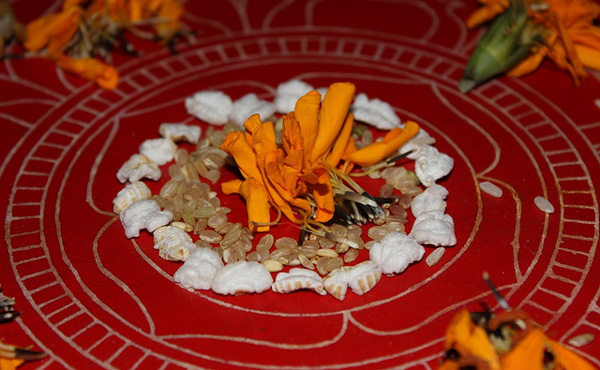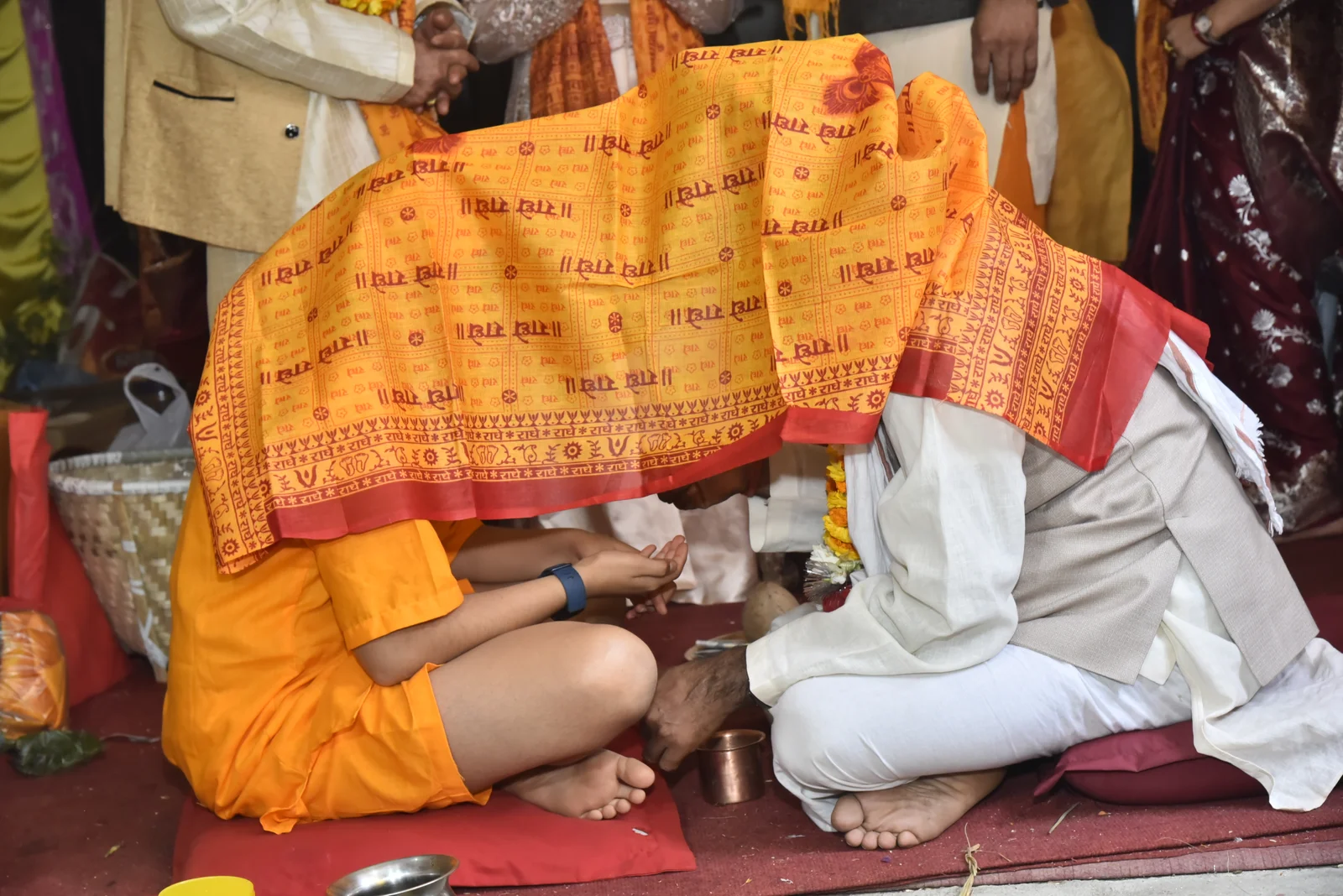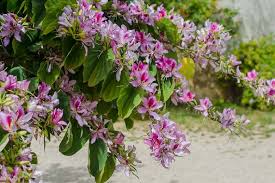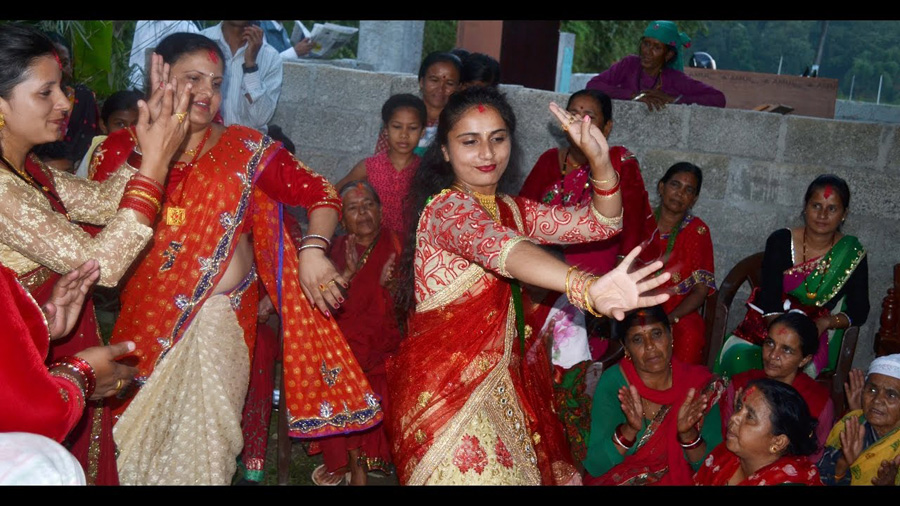Share this Article

Introduction
Mha Puja is one such special Newar culture and religious celebration. The "worship of the self" holiday, by this name, is an exercise of self-reflection, renewal, and gratitude. It coincides with the Nepal Sambat, Newar New Year's, which often falls in the months of October or November. This festival is not just a celebration of one's self but also a strengthening of community bonds and the welcoming of good fortune. We will explore the history, rituals, significance, and modern practices of Mha Puja in this article, getting an insight into this rich heritage.
Origins and Historical Background
Mha Puja has origins that go way back in Newar society. The Newars are indigenous inhabitants of the Kathmandu Valley and possess a rich heritage and festivals. The historical development of Mha Puja is not clear, but scholars believe that it evolved from ancient Hindu and Buddhist traditions combined with local custom. The festival has close links with Nepal Sambat, a lunisolar calendar originally introduced in the 9th century by Sankhadhar Sakhwa, a Newar merchant. Nepal Sambat replaced the older lunar calendar and became a signifier of Newar identity (Shrestha, 2012).
Mha Puja is believed to have gained popularity under the Malla dynasty (12th–18th century), when art, culture, and religion flourished in the Kathmandu Valley. The Malla kings patronized rituals that blended Hindu and Buddhist practices, and Mha Puja's focus on self-worship would have resonated with both communities. Today, the festival is celebrated by Newars of all faiths, as an expression of Nepal's syncretic society.
Rituals and Preparations
Mha Puja is a domestic occasion, typically conducted at home. It is prepared for several days in advance. Homes are cleaned, new clothes are bought, and materials for the ritual are procured. The main ceremony is conducted in the evening, and members of the family sit in a circle around a mandala (geometric design) on the ground. The mandala, made of colored rice flour, symbolizes the universe and the individual's connection to it.
In the center of the mandala, there is a ritual oil lamp called a pala. Fruits, flowers, nuts, and sweets are placed surrounding it. Each member of the family also receives a set of ritual items: a clay lamp, small in size, a rice bowl, a fruit, and a phayepu (an adornment thread). The rituals are performed by the senior male or female member of the family, and he or she serves as the priest.
The ceremony consists of several steps:
Lighting the Lamp: The pala lamp is lit symbolizing the annihilation of ignorance and darkness.
Offering to the Mandala: The gift is offered to the mandala by the participants as they say prayers.
Self-Worship: All members place a concoction of yogurt, rice, and vermilion powder on the forehead, signifying purity and respect for themselves.
Blessings: Elders bless younger members of the family, granting them good health and prosperity.
Feast: The ritual culminates in a feast by the group using common Newar fare like bara (lentil pancakes) and ayela (rice-made fermented alcohol).
The emphasis on self-worship sets Mha Puja apart from other festivals. It instills that the veneration of oneself is the portal to veneration of others and the world (Nepal Tourism Board, 2020).
Symbolism and Significance
Mha Puja is rich in symbolism and reflects Newar philosophy and spirituality. The mandala represents the universe, and the lighted lamp represents the inner wisdom. Self-worship is not vanity but embracing one's divinity. In Newar culture, every human being is a microcosm of the world, and caring for oneself harmonizes with the larger world.
The festival also celebrates the New Year, so it is a time of renewal. Individuals put aside resentments, forgive transgressions, and make resolutions. The rice used in the ritual is symbolic of abundance, and the phayepu thread symbolizes immunity from negative forces. Through engaging in Mha Puja, Newars affirm their cultural identity and adherence to communal values such as unity and respect for one another.
The position of women is also another key aspect. Women hold sway over the ceremonies in most Newar households, illustrating their pivotal role in Newar society. This contrasts with some customary Hindu faiths where the clergy are male and dominate ceremonies. Mha Puja thus improves gender equality and respect for every individual (Gellner, 1992).
Mha Puja in Modern Times
Urbanization and globalisation have shaped the celebration of Mha Puja. In urban centres such as Kathmandu, where Newars are found in significant numbers, post-migration, the festival incorporates contemporary living patterns. Some households maintain conventional procedures, whereas others streamline the process because of a lack of time. Yet the fundamental principles of self-respect, harmony with family members, and cultural identity remain constant.
Social media has helped to sustain Mha Puja as well. Newars young people share images and videos of their celebrations on social media to make other individuals aware of their traditions. Schools and nongovernmental organizations hold public celebrations of Mha Puja so that younger generations can participate. In 2018, for example, Kathmandu's Durbar Square held an extensive-scale celebration of Mha Puja with several hundreds in attendance, demonstrating the festival's ongoing vitality (The Kathmandu Post, 2018).
In spite of these developments, problems still exist. Most young Newars do not know the meaning of the rituals, threatening cultural deterioration. Activists and elders are engaging in a mission to record customs and educate them during workshops. The government has also declared Nepal Sambat to be a national holiday, increasing people's awareness of Mha Puja.
Conclusion
Mha Puja is more than a festival; it is a joyous celebration of life, self, and connectivity. By worshipping the self, Newars are celebrating the divine in and around them. The rituals, passed down from generation to generation, encourage the people to respect themselves and their community. In a changing world, Mha Puja preaches timeless virtues of thankfulness, renewal, and pride in culture.
As Nepal urbanizes, festivals like Mha Puja are moorings, keeping people rooted to their traditions. Whether as a domestic ceremony or public festival, the spirit of Mha Puja—being kind to oneself and others—remains a source of hope and unity.
Categories:
Culture & Traditions
Tags:
Mha puja
,
Self Puja







